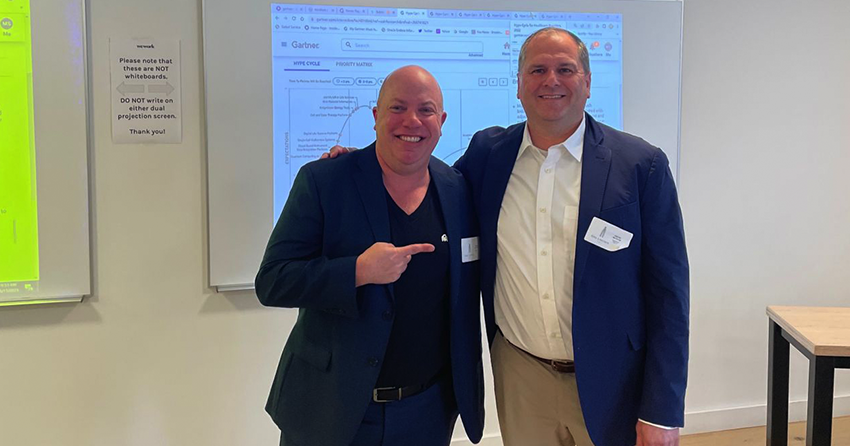In an era where the digital landscape is strong with innovation, businesses are facing an unprecedented surge in cyber threats. As we dive deeper into 2024, the global economy braces for the staggering aftermath of cyberattacks, projected to cost over USD 10.5 trillion by year-end, according to recent data from Gartner.
Amidst this escalating threat landscape, the spotlight is firmly on the critical aspects of vulnerability remediation and exposure management, and here’s why these elements are pivotal for organizations in 2024 and beyond.
Understanding Vulnerability Remediation
What is Vulnerability Remediation?
Vulnerability remediation is a proactive cybersecurity practice focused on identifying, prioritizing, and addressing vulnerabilities within an organization’s IT infrastructure. A vulnerability, in this context, refers to a weakness or flaw in the system that could be exploited by malicious actors to compromise the security of data, applications, or network devices.
The Process:
Vulnerability Identification: The first step involves systematically identifying potential vulnerabilities through various means, including vulnerability scanning tools, penetration testing, and security assessments.
Prioritization: Not all vulnerabilities are created equal. Prioritization is crucial to address the most critical vulnerabilities first, considering factors such as potential impact, exploitability, and the sensitivity of the affected systems.
Patch Management: Vulnerability remediation often involves applying patches or updates provided by software vendors to eliminate identified vulnerabilities. This ensures that systems are fortified against known exploits.
Configuration Management: Proper configuration of systems and applications is essential for reducing vulnerabilities. Vulnerability remediation includes optimizing configurations to align with security best practices.
Continuous Monitoring: The process doesn’t end with patching. Continuous monitoring is essential to ensure that new vulnerabilities are promptly identified and addressed as they emerge.
Why is Vulnerability Remediation Important?
Proactive Risk Mitigation: By addressing vulnerabilities before they can be exploited, organizations proactively reduce the risk of falling victim to cyberattacks.
Compliance Requirements: Many regulatory frameworks mandate organizations to maintain secure systems and promptly address vulnerabilities. Vulnerability remediation helps meet compliance standards.
Preserving Reputation: Swiftly remediating vulnerabilities demonstrates a commitment to cybersecurity, enhancing an organization’s reputation and instilling trust among customers, partners, and stakeholders.
Cost Reduction: Investing in vulnerability remediation upfront is more cost-effective than dealing with the financial aftermath of a successful cyberattack, including potential legal fees, regulatory fines, and remediation costs.
In essence, vulnerability remediation is the proactive and systematic process of fortifying an organization’s digital infrastructure against potential threats, thereby creating a robust defense mechanism in the ever-evolving landscape of cybersecurity.
Decoding Exposure Management
What is Exposure Management?
Exposure management is a strategic cybersecurity discipline aimed at identifying, assessing, and mitigating risks associated with the potential exposure of critical assets and sensitive information. While vulnerability remediation focuses on fixing specific weaknesses, exposure management takes a broader approach by addressing the overall risk landscape and potential avenues through which an organization could be vulnerable.
Key Components:
Asset Inventory: Exposure management begins with a comprehensive inventory of digital assets. This includes everything from hardware and software to data repositories and cloud services.
Risk Assessment: Through systematic risk assessments, exposure management evaluates the potential impact of vulnerabilities on critical assets. This process considers the likelihood of exploitation and the consequences of a successful attack.
Threat Modeling: Understanding the threat landscape is crucial. Exposure management employs threat modeling to identify potential attack vectors and scenarios, enabling organizations to fortify their defenses against likely threats.
Security Controls: Implementing robust security controls is a fundamental aspect of exposure management. This includes access controls, encryption, and other measures designed to safeguard assets from unauthorized access and data breaches.
Incident Response Planning: Exposure management extends to planning for potential incidents. Organizations develop and refine incident response plans to minimize the impact of a security incident, ensuring a swift and effective response.
Why is Exposure Management Important?
Holistic Risk Management: Exposure management provides a holistic view of an organization’s risk landscape, allowing for strategic decision-making to mitigate risks at both specific vulnerability points and in broader contexts.
Resilience Building: By addressing potential exposure points, organizations build resilience against a diverse range of threats, enhancing their ability to withstand and recover from security incidents.
Regulatory Compliance: Many regulatory frameworks require organizations to manage and mitigate exposure effectively. Compliance with these standards is crucial for avoiding fines and legal consequences.
Business Continuity: Exposure management contributes to maintaining uninterrupted business operations. By identifying and mitigating potential threats, organizations ensure continuity in the face of cyber incidents.
In essence, exposure management is a proactive and strategic approach to fortify an organization’s overall security posture by identifying and mitigating risks associated with potential exposures. By addressing vulnerabilities comprehensively and understanding the broader risk landscape, exposure management contributes to the resilience and long-term security of the organization.
The Evolving Threat Landscape
Sophisticated Cyber Threats: The nature of cyber threats is evolving rapidly, with adversaries deploying increasingly sophisticated techniques to exploit vulnerabilities. Vulnerability remediation becomes paramount as organizations must stay one step ahead in securing their digital infrastructure against these advanced threats.
Expanding Attack Surface: The rise of remote work, interconnected ecosystems, and the proliferation of Internet of Things (IoT) devices contribute to an expanding attack surface. Exposure management is crucial to identify and mitigate potential weaknesses, reducing the overall risk landscape for organizations.
The Cost of Inaction
Financial Implications: Cyberattacks not only disrupt business operations but also carry significant financial repercussions. The costs associated with data breaches, regulatory fines, and reputational damage can cripple an organization. Vulnerability remediation and exposure management act as proactive measures to minimize the financial impact of potential cyber incidents.
- Reputation at Stake: Beyond financial losses, the reputational damage resulting from a successful cyberattack can be irreparable. Customers and partners demand assurance that their data is secure. By prioritizing vulnerability remediation and exposure management, organizations demonstrate a commitment to safeguarding sensitive information and preserving trust.
Versetal's Holistic Approach
Versetal is not merely a technology solutions provider; we offer comprehensive cybersecurity solutions tailored to each organization’s needs. Our SOC’s main focus areas include MDR, SIEM, SAT, IVM, and CloudSec, to name a few. At the core, we provide virtual Chief Information Security Officer (vCISO) advisory services, leveraging strategic insights for effective cybersecurity decision-making. However, some focus areas for vulnerability remediation and exposure management include, but are not limited to:
Continuous Threat Monitoring: Versetal’s 24/7 Security Operations Center (SOC) and Continuous Threat and Exposure Management (CTEM) ensure continuous monitoring, enabling swift detection and response to potential threats. This proactive approach is crucial in a landscape where the speed of threat identification directly impacts the extent of potential damage.
Proactive Incident Response: Vulnerability remediation is not just about fixing vulnerabilities but also about having a robust incident response strategy. Versetal’s Incident Vulnerability Management (IVM) ensures organizations can respond swiftly and effectively to cybersecurity incidents, minimizing the window of opportunity for malicious actors.
- Dark Web Vigilance: Exposure management extends to the dark web, where cybercriminals operate covertly. Versetal’s Dark Web Monitoring actively seeks potential threats and compromised credentials, allowing organizations to preemptively address vulnerabilities before they can be exploited.
Compliance and Regulatory Landscape
Compliance Requirements: Regulatory bodies are tightening their grip on data protection and privacy. Vulnerability remediation and exposure management are integral components of compliance strategies, helping organizations adhere to stringent regulatory requirements and avoid costly penalties.
- Data Privacy Concerns: In an era where data privacy is a growing concern, organizations must prioritize vulnerability remediation to protect sensitive information. Exposure management ensures that data, both at rest and in transit, is shielded from unauthorized access.
Future-Proofing Security
- Scalability and Long-Term Security: Versetal’s full security stack, encompassing vulnerability remediation and exposure management, provides organizations with a scalable and long-term security solution. As businesses evolve, so do their security needs. Versetal’s holistic approach ensures that organizations can adapt to emerging threats and technological advancements without compromising their security posture.
In conclusion, the rise of vulnerability remediation and exposure management is not merely a response to current threats; it is a proactive strategy to future-proof businesses in an ever-evolving digital landscape.
Versetal’s commitment to excellence in cybersecurity positions it as a strategic partner for organizations seeking not just security but resilience in the face of emerging challenges. As the cost of cyberattacks continues to climb, investing in vulnerability remediation and exposure management with Versetal becomes not only a choice but a necessity for businesses aiming to secure their digital future.


